National Register of Historic Places News
By Dr. J Ethan Holden
The National Register of Historic Places is the nation’s official list of cultural resources worthy of preservation. It is part of a nationwide program that coordinates and supports efforts to identify, evaluate and protect historic resources. The State Historic Preservation Office administers the program in Tennessee. The state’s new listings are:

Exit/In
Listed March 28, 2023
(Nashville, Davidson County)
Located on Elliston Place in Nashville’s “Rock Block,” Exit/In was nominated for its exceptional impact on Nashville’s alternative music and entertainment scene. Exit/In opened in 1971, though the building it occupied on Elliston was constructed nearly twenty-years earlier. Owsley Manier and Brugh Reynold were the original owners of the building. Manier and Reynold chose the location because of its proximity to Vanderbilt University and the local neighborhood’s reputation as a “youth-oriented” area. Exit/In quickly established itself as an important alternative music venue in a city known for country music. Since its opening, Exit/In has hosted many important artist, musicians, singers, and songwriters, including Jimmy Buffett, Doc Watson, Joan Baez and Odetta, John Prine, Linda Ronstadt, Billy Joel, and Kris Kristofferson, to name a few. Popular music historians have ranked Exit/In with the Troubadour in Los Angeles and the Bottom Line in New York City as one of the most pivotal popular music clubs in the United States in the 1970s and 1980s.
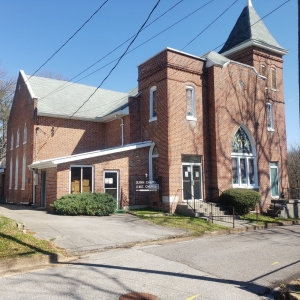
Quinn Chapel A.M.E. Church
Listed January 17, 2023
(Paris, Henry County)
Quinn Chapel A.M.E. Church is located in a historically African American residential neighborhood in Paris, Henry County. The church was constructed in 1917 after the previous building burned in 1916. Quinn Chapel and its congregation were an integral part of their surrounding community and the city of Paris. The church sponsored many civic and community outreach programs. The Paris-Henry County Civic League was organized in Quinn Chapel’s basement in 1932, and the Paris-Henry County Branch of the National Association for the Advancement of Colored People (NAACP) hosted events at Quinn Chapel in the 1960s teaching attendees how to apply for jobs or advance their own career. Quinn Chapel was also active within the African Methodist Episcopal (A.M.E.) denomination. The church sponsored other congregations nearby, and their choir was known regionally for their excellence. Current congregation members continue this tradition of community outreach and service.
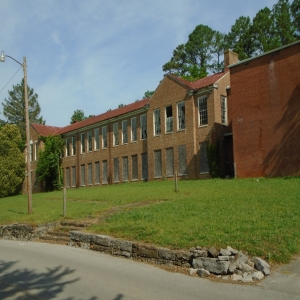
Maury High School
(Dandridge Historic District Additional Documentation)
Approved February 1, 2023
(Dandridge, Jefferson County)
Maury High School, located in the Dandridge Historic District in Dandridge, Jefferson County, was nominated for its Colonial Revival architecture. The high school was constructed in 1927 by architectural firm Barber & McMurry. It was preceded by several private male and female academies located in and around Dandridge. Maury High School possesses many of the character-defining architectural features of the Colonial Revival style, including symmetrical fenestration with multi-light wood windows, a classically influenced entrance door, and circular brick chimney. Additions to the school in 1955 also demonstrate the influence of Modernism architectural design on school buildings. In the mid-1950s, a new high school was constructed on Maury Circle, and the nominated building became the Dandridge Elementary School. It served as the elementary school until the 1980s, at which point it became used for storage. The current owner plans to rehabilitate the building using preservation incentives.
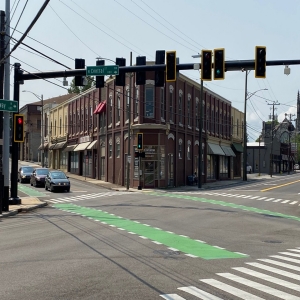
Emory Place Historic District
(Boundary Increase and Additional Documentation)
Listed April 20, 2023
(Knoxville, Knox County)
The Emory Place Historic District in Knoxville was listed in the National Register on November 10, 1994, for its importance in both architecture and the history of transportation development. This nomination expanded and updated the district to include its significance in the commercial and community planning history in the area. Early growth in North Knoxville gave rise to Central Market, a short, two-block long divided street that was home to a one-story market building constructed in 1890. In April 1905, the City of Knoxville tore down the market building and converted the space the market housed into a public park. It was named Emory Park in honor of Reverend Isaac Emory and was later renamed Emory Place in the mid-1950s. Emory Place quickly became a bustling economic and transportation hub. The first streetcar line established in Knoxville located its southern terminus at North Broadway and Tyson Street, and later several of Knoxville’s first gas stations were located in the district. Buildings in the district housed businesses such as bakeries, grocery stores, furniture store, pharmacies, and dry cleaners. The district declined throughout the second-half of the twentieth-century as businesses relocated to the suburban sprawl of West Knoxville. By the early 1980s, many buildings in the district had deteriorated. However, a combination of federal preservation incentives and community preservation efforts have given the district new life.
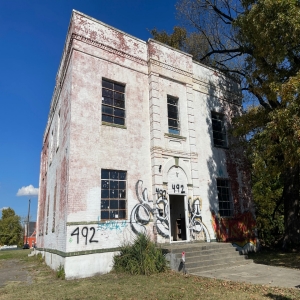
Griggs Business and Practical Arts College
Listed March 21, 2023
(Memphis, Shelby County)
Griggs Business and Practical Arts College occupies a small lot on Vance Avenue in Memphis, Shelby County. The College building was originally constructed in 1858 to serve as the residence for John Minter Gregory and Elizabeth Stovall. The neighborhood surrounding the building at the time of its construction was occupied primarily by affluent, white Memphians. As white Memphians moved eastward in the twentieth century, African-American families moved into the vacancies, bring new life and history to these areas. Reverend S.A. Owens and C.J. Gaston purchased the building on December 15, 1949 to serve as the campus for Griggs Business and Practical Arts College. Founded by educator and civil rights activist Emma Griggs, the college offered practical courses to its students, including shorthand, business English, commercial law, secretarial guidance, and typewriting. More than one-thousand men and women received their education from Griggs, and many alumni went on to hold leadership roles in their communities and professions. The College declined in the 1970s in the face of Urban Renewal and financial problems. It was officially dissolved in 1983. The current owner of the property is committed to preserving the building and transforming it into a vital resource for the surrounding community.
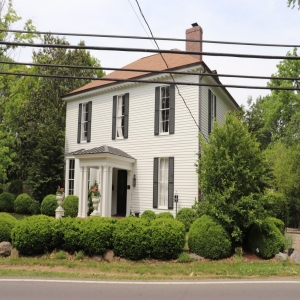
Lewisburg Avenue Historic District
(Boundary Decrease, Boundary Increase and Additional Documentation)
Listed April 20, 2023
(Franklin, Williamson County)
Lewisburg Avenue Historic District was first nominated on April 13, 1988 for its architectural significance. This update adjusted the boundaries and provided additional architectural information on buildings constructed after World War II. The Lewisburg Avenue Historic District is home to a large collection of residential architecture that reflects evolution in American architecture in the area and the state. Greek Revival, Italianate, Queen Anne, Folk Victorian, Tudor Revival, Colonial Revival, and Craftsman types are all represented. The residential district grew along the former Lewisburg Pike toll road. The Otey-Campbell House was the earliest residence. Development continued southward in the late nineteenth century following the subdivision of land owned by Colonel John B. McEwen. It was the 1920s that brought the most significant building campaign along Lewisburg Avenue. Little has changed in the district since it was listed in 1988, and in 2022 the City of Franklin adopted guidelines for historic districts to assist in their preservation. This update was partially funded by a federal Historic Preservation Fund grant.